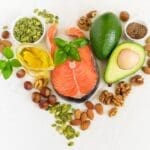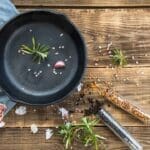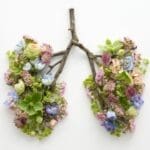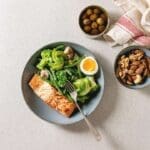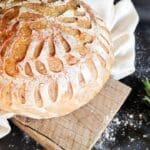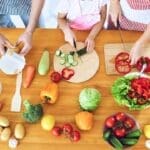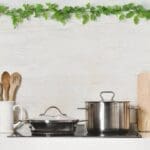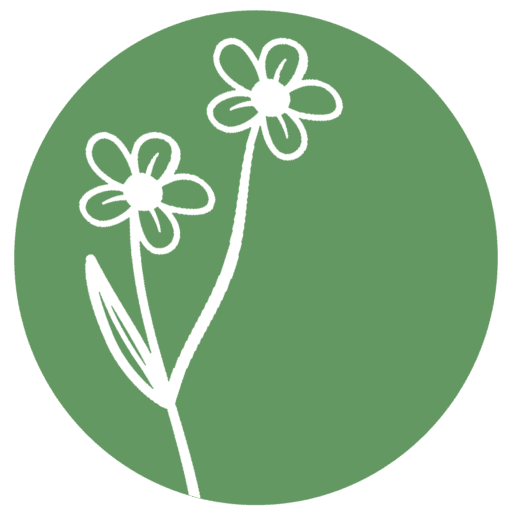Here’s a breakdown of our top kitchen must-haves for a healthier home.
1. Mason Jars (and One-Piece Lids)
Mason jars are a staple in any non-toxic kitchen. They are perfect for storing dry goods, homemade sauces, ferments, and even leftovers without the worry of harmful plastics leaching into your food.
- Use them for: Storing pantry staples, fermenting vegetables, or keeping drinks fresh.
- Upgrade with: One-piece, BPA-free lids to keep food airtight and fresh longer.
Shop Mason Jars | One-Piece Mason Jar Lids
2. Mason Jar Lid Sealer
A mason jar lid sealer is a game-changer for keeping food fresher, longer. This tool helps vacuum-seal jars for airtight storage, preserving the quality of your food and reducing waste.
- Use it for: Sealing homemade broths, sauces, and ferments.
3. Stainless Steel Mixing Bowls
Plastic mixing bowls can leach harmful chemicals into your food, especially when exposed to heat. Stainless steel bowls are a durable, non-toxic alternative that can handle everything from mixing dough to marinating meats.
- Benefits: Non-reactive, easy to clean, and lasts for years.
Shop Stainless Steel Mixing Bowls
4. Cheesecloth
Cheesecloth is an incredibly versatile kitchen tool for straining homemade nut milk, broths, and even fermenting foods. Look for unbleached, dye-free cheesecloth to avoid unnecessary chemicals.
- Use it for: Straining, fermenting, and cheese-making.
5. Dye-Free Baking Supplies
Conventional baking ingredients often contain artificial dyes and additives. Stock your kitchen with clean, dye-free baking essentials to make treats that are better for your health.
- Must-haves:
- 365 by Whole Foods Market Food Coloring for natural colors.
- Aluminum-Free Baking Powder for toxin-free baking.
- Dye-Free Sprinkles for fun, colorful decorations without the chemicals.
Shop Dye-Free Baking Essentials

6. Glass Food Storage Containers
Swap out plastic storage containers for glass to avoid harmful chemicals like BPA and phthalates. Glass containers are durable, non-toxic, and perfect for meal prep and leftovers.
- Upgrade with: Airtight bamboo or silicone lids.
Shop Glass Food Storage Containers
7. Cast Iron and Stainless Steel Cookware
Non-stick cookware can release harmful chemicals when heated. Opt for seasoned cast iron or stainless steel cookware for a non-toxic, long-lasting alternative.
- Why Cast Iron? Cast iron cookware is durable, naturally non-stick when properly seasoned, and free from toxic coatings. However, many pre-seasoned cast iron skillets are coated with soybean oil, which can be problematic for those avoiding soy or concerned about its hormone-disrupting properties.
How to Strip and Re-Season a Cast Iron Skillet:
- Strip the Skillet:
- Preheat your oven to 450°F.
- Place the skillet upside down in the oven and bake for 1 hour to remove the existing seasoning. Alternatively, use a steel wool pad to scrub it down to the bare iron.
- Wash and Dry:
- Wash the skillet thoroughly with warm water and a small amount of soap to remove any residue.
- Dry it completely to prevent rust.
- Re-Season the Skillet:
- Coat the skillet lightly with a high-smoke-point oil, such as avocado oil, tallow, or lard. Avoid vegetable or soybean oils.
- Place the skillet upside down in a 450°F oven for 1 hour.
- Allow it to cool in the oven before using.
- Use it for: Everyday cooking, baking, and roasting.
Shop Cast Iron Skillets | Shop Stainless Steel Pots
8. Wooden and Stainless Steel Utensils
Ditch plastic utensils that can melt and leach chemicals into your food. Choose wooden or stainless steel for safer cooking.
Shop Wooden Utensils | Shop Stainless Steel Utensils
9. Unbleached Parchment Paper
Skip silicone baking mats and stick with unbleached parchment paper for a safe, non-toxic baking solution. It’s free from chlorine, dyes, and harmful chemicals, making it the perfect choice for all your baking and roasting needs.
- Use it for: Baking cookies, roasting vegetables, and lining pans without chemical exposure.
Shop Unbleached Parchment Paper
10. Wooden or Stainless Steel Measuring Cups and Spoons
Plastic measuring tools can wear down and release microplastics into food. Wooden or stainless steel options are more durable, non-toxic, and safer for daily use.
Shop Wooden Measuring Cups | Shop Stainless Steel Measuring Cups

Final Thoughts
A healthy kitchen is built on clean, durable, and non-toxic tools. By investing in these must-have items, you’re creating a safer environment for cooking and storing food—and ultimately supporting your family’s health. Start small or go all in, but every swap you make brings you closer to a toxin-free kitchen.
Ready to upgrade your kitchen? Explore our favorite non-toxic essentials and make the switch today!




